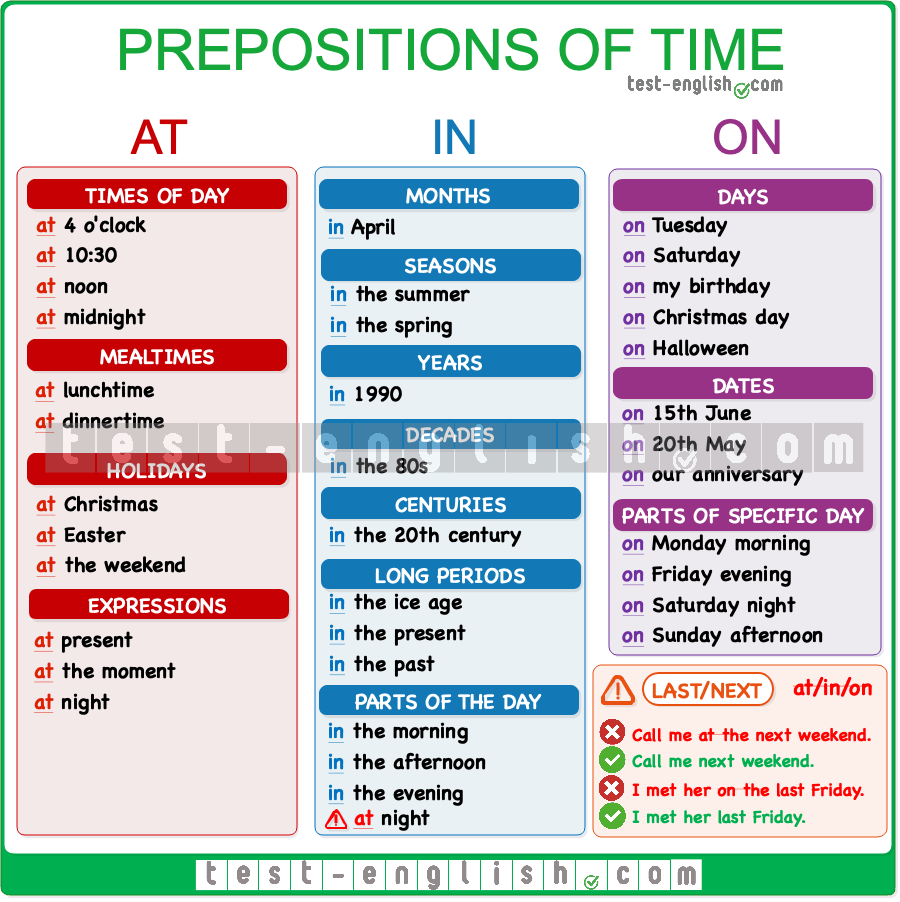What are prepositions of time? They help us express when something happens. Three common ones are at, in, and on.
At
At is used to indicate specific points in time, including times of day, mealtimes, and bedtime. (at 3 o’clock, at 10.30 am, at noon, at dinnertime, at bedtime, at sunrise, at sunset)
Example
- I have a meeting at 9 a.m.
- The shop closes at midnight.
- Jane went home at lunchtime.
At is also used with some specific phrases, such as at the weekend, at Christmas/Easter, at the same time, at present, at the moment.
Example
- I don’t usually work at the weekend.
- I stay with my family at Christmas.
- We finished the test at the same time.
- He’s not home at present. Try later.
In
We use in for parts of the day (in the morning), longer durations (in April, in summer), specific years (in 1990), entire decades (in the 1990s), or even centuries (in the 20th century). It also applies to broader time concepts like the past, future, and recent years.
Example
- In summer, it’s too hot to do anything.
- I’m always really busy in December.
On
We use on with days and dates.
Example
- I have a long lunch on Friday.
- I have a meeting on Tuesday morning
- It’s his birthday on October 19th.
- Families gather around the tree on Christmas Day.
- We celebrate with fireworks on Independence Day.
- On my birthday, I like to treat myself to a special dessert.
- On New Year’s Eve, people count down to midnight

Image source: At, in, on – prepositions of time - Test-English
References